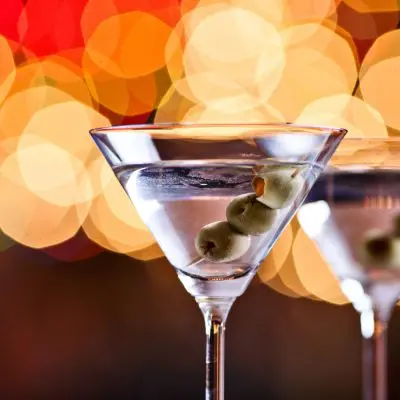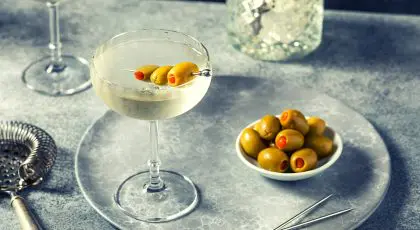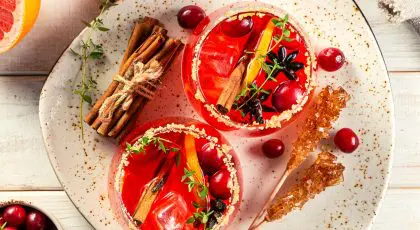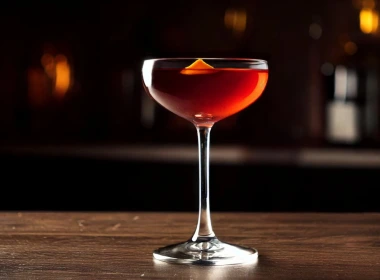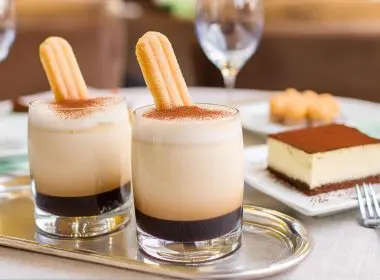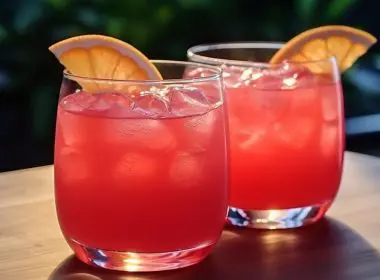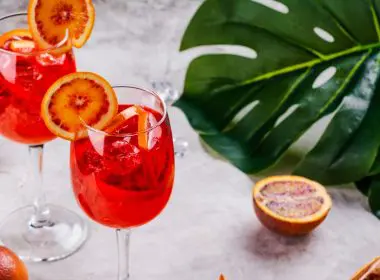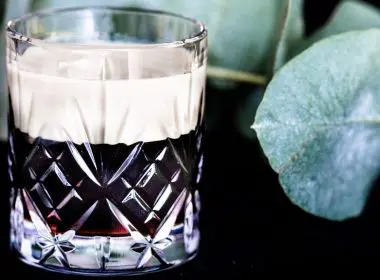What is the Difference Between a Gibson and Martini Drink?
Jump to:
The Gibson vs Martini debate is one that drinkers have long argued about in smoky bars around the world. Which one is better? Which one is more sophisticated? And why does the Gibson get its own name when technically it’s still just a Martini? To answer all these questions, we must do a deep dive into the Martini glass to learn about each ingredient and what they bring to the flavour party. We also give you inside-info on the different types of garnishes and how they give a Martini its personality.
Martini
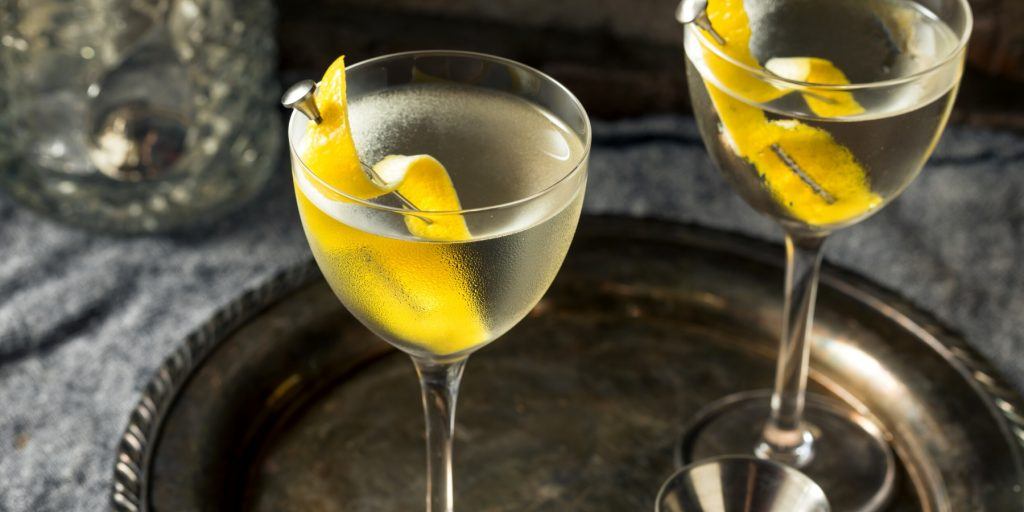
The Martini is, without a doubt, one of the most iconic cocktails ever created. At its core, it’s a cocktail with just a handful of ingredients but don’t let the simplicity fool you. Martini drinkers are some of the most specific patrons in the world. Just look at James Bond’s Vesper Martini order from Casino Royale— three measures of gin, one of vodka, half a measure of aromatised wine aperitif shaken over ice and garnished with a lemon peel.
It’s the specificity of the order ratios that makes the Martini unique. A classic dry Martini is gin and dry vermouth but within those two ingredients lies a vast range of flavour options. Gin’s flavour comes from the botanicals that are infused into it. This can range from sweet, spicy or herbaceous to floral, fruity and even dried fruit flavours. And then there‘s the dry part. Just exactly how dry do you want your Martini to be and what does that even mean?
Vermouth is a French bitter-sweet, fortified wine that adds the dry element to the Martini. The less vermouth, the drier the Martini and conversely, the more vermouth, the wetter a Martini becomes. Just like gin, the flavour of vermouth varies from brand to brand due to the botanicals used to infuse them. So experiment with a few and find one that suits your taste.
In Mr Bond’s case, he completely threw the rule book out the window and ordered a gin and vodka mix. He also replaced the vermouth with an equally bitter-sweet counterpart in the aromatised wine aperitif. It’s his unique order that makes this a Vesper Martini but sometimes all you need is a different garnish to change a Martini’s profile.
The classic dry Martini is served with a lemon twist. The lemon is squeezed over the glass to release the oils and then it’s run around the rim to impart a citrus zing. The lemon flavour enlivens the botanicals in the Martini and provides a refreshing hit of citrus for balance. If you prefer your Martini with even more kick then opt for a green olive garnish. The briny bite and earthy flavour of the olive enhance the bitter edge of the botanicals. The famous Dirty Martini goes a step further and adds equal parts olive brine to dry vermouth.
Now that we’ve covered the Martini bases, we can go back to the Gibson vs Martini debate. Essentially a Gibson is just a regular old dry Martini but instead of a lemon twist or olive, it’s garnished with a skewer of two cocktail onions. It sounds like such a simple thing, and it is, but like every aspect of the Martini, it makes a big difference.
You might also like: Everything You Need to Know About Vermouth.
Gibson

The Gibson Martini has been around since the late 1800s, when businessman, Walter D.K Gibson started putting them into his gin Martini. He believed that eating onions prevented colds and we guess he had to find a more palatable way to get them down. More recently, the Gibson shot into the limelight once again when it featured in The Queen’s Gambit on Netflix. It was the cocktail of choice for the chess prodigy protagonist, Elizabeth Harmon. Throughout the series, she single-handedly put the cocktail onion back in vogue. Suddenly, bars all over the world were serving this classic cocktail, and drinkers were wondering where it had been all their lives.
The funny thing is the Gibson has always been here. It almost feels as if it’s been lying patiently in wait for its chance to supplant its briny brother the olive. And what makes a pickled cocktail onion so special, I hear you ask? Well, like everything Martini we’ve discussed so far, the answer is layered just like an onion.
Apart from being a tasty bar snack, a cocktail onion is naturally sweet with a subtle onion flavour. They are crisp and earthy and if you make them yourself, you can infuse them with citrus, herbs or even chilli. They add an umami edge to the botanicals of the Martini and the best part is you get two to munch on as you sip your drink.
DIY cocktail onions
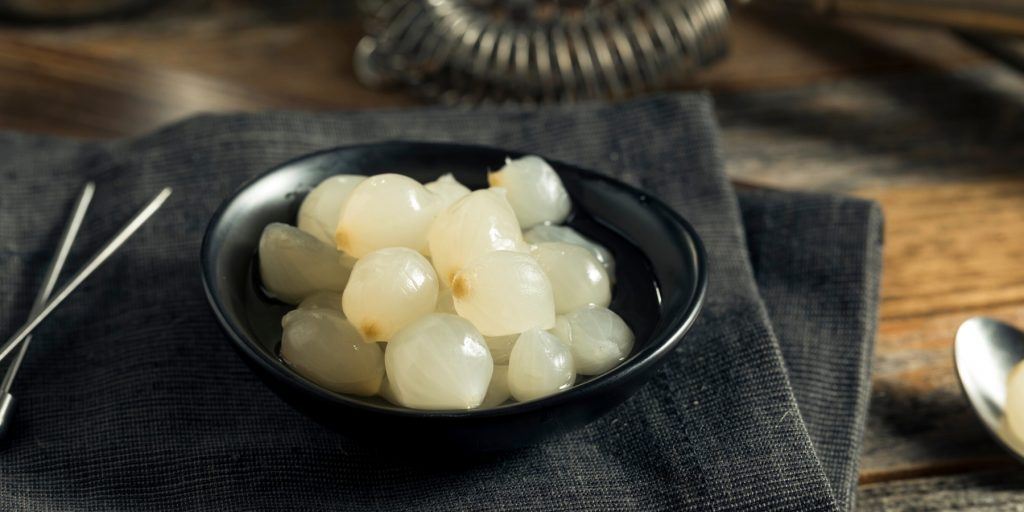
Can’t find a cocktail onion to suit your taste? Make your own!
- Make your own signature cocktail onions. It’s super easy. All you’re going to do is make a brine, warm it in a saucepan and add pearl onions. Let it simmer briefly (around 2 minutes), then remove it from the heat. Once it’s at room temperature, scoop the onions into a jar, pour in the brine, and seal with a lid. Pop it in the fridge for a week before using it in your Gibson cocktail.
- Make the best cocktail onion brine with half a cup of white vinegar, ¾ cup of dry vermouth, a few tablespoons of sugar, a tablespoon of salt, and flavourings of your choice. Lemon peel, herbs, chilli, and coriander seeds are all great options.
- The last bit of advice we can give you is to stir and not shake your Gibson. If you shake this martini, it gets too diluted. This baby is best served stirred to give the gin and vermouth a chance to show off. Is anyone thirsty yet? We bet you are!
